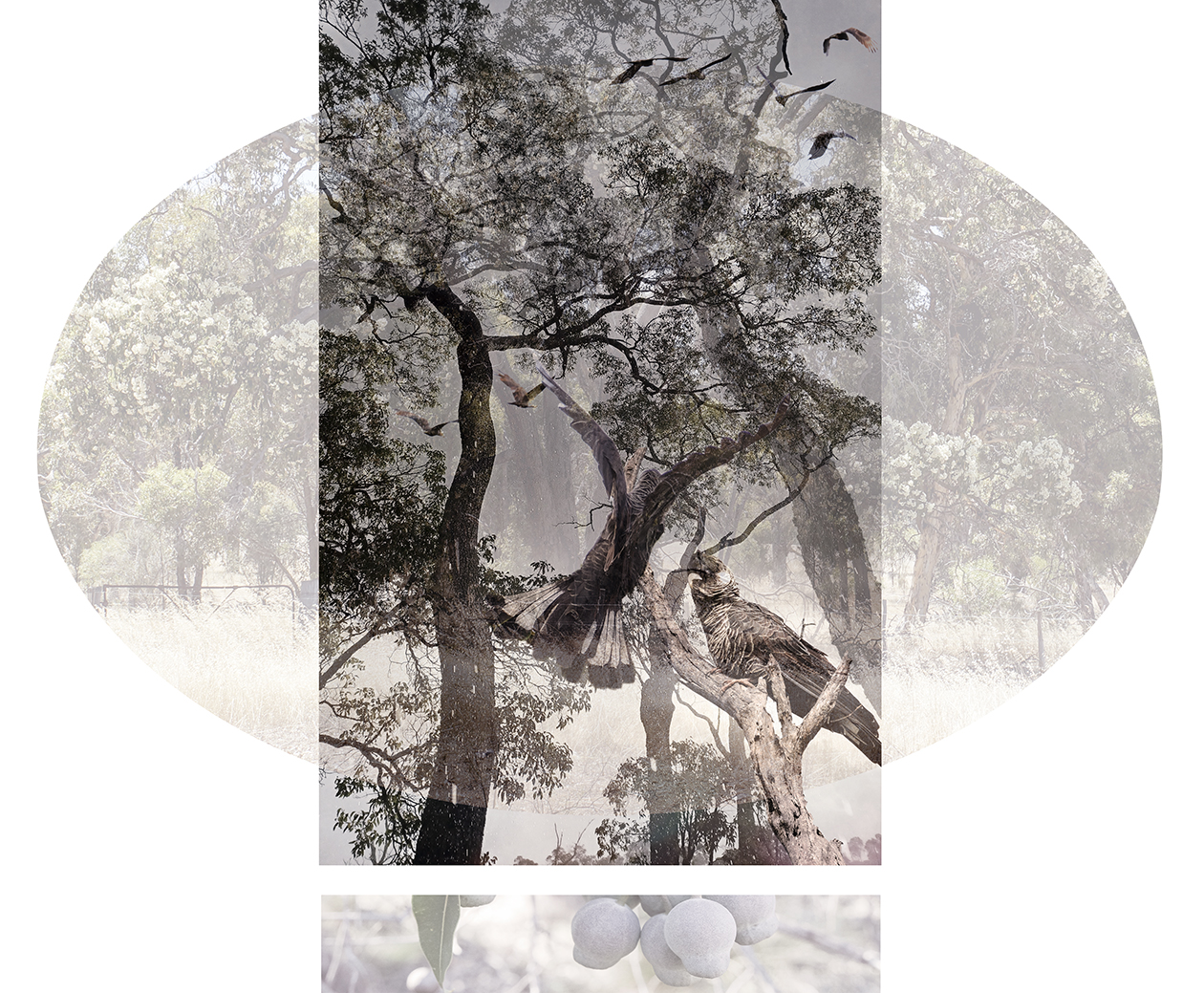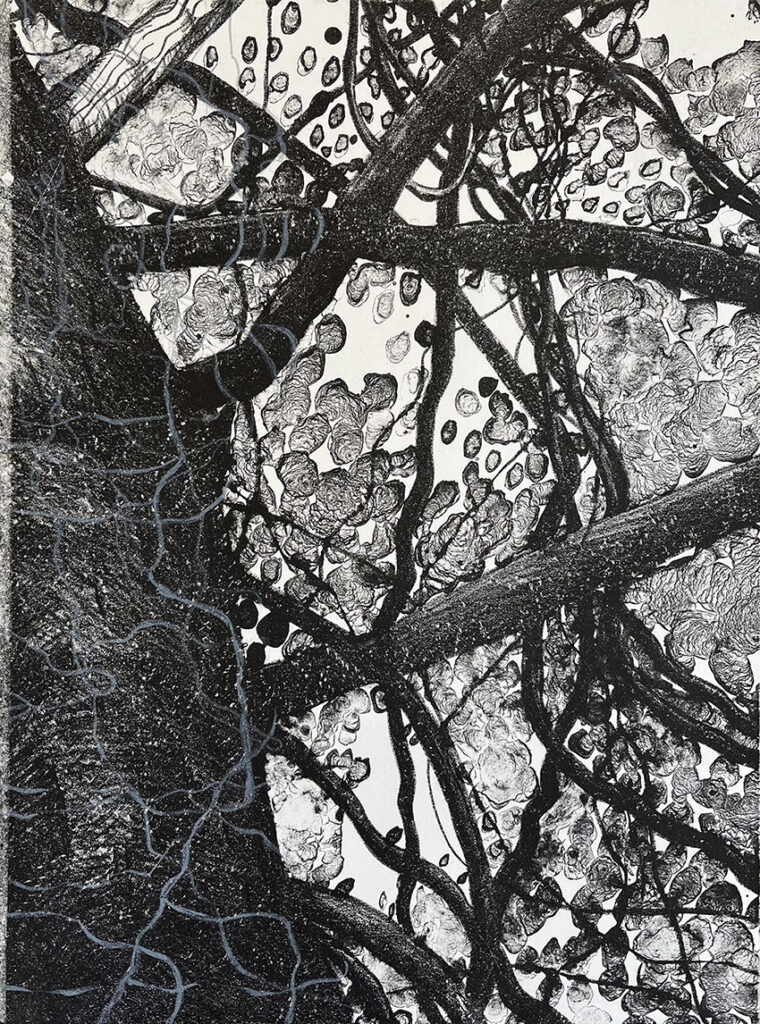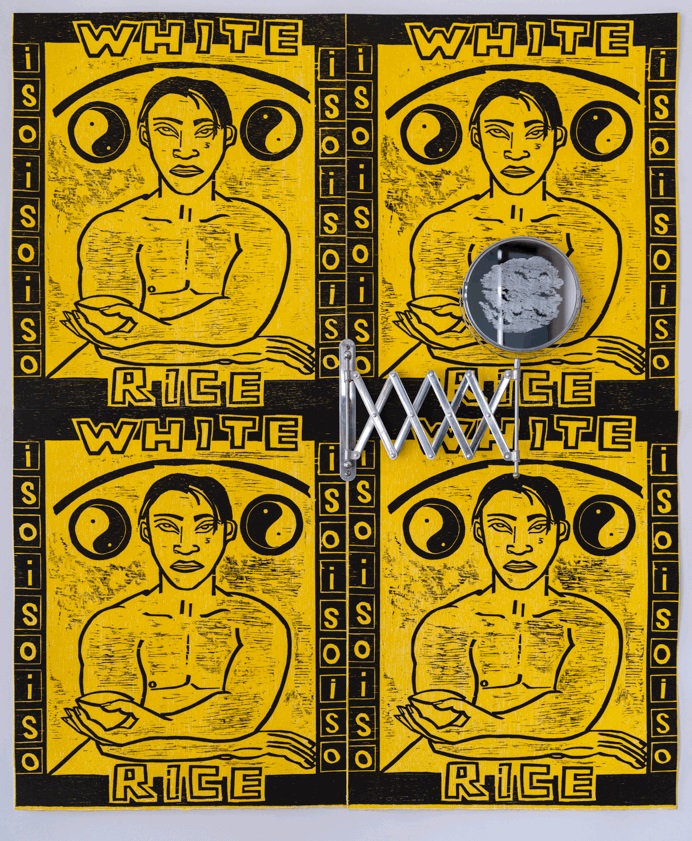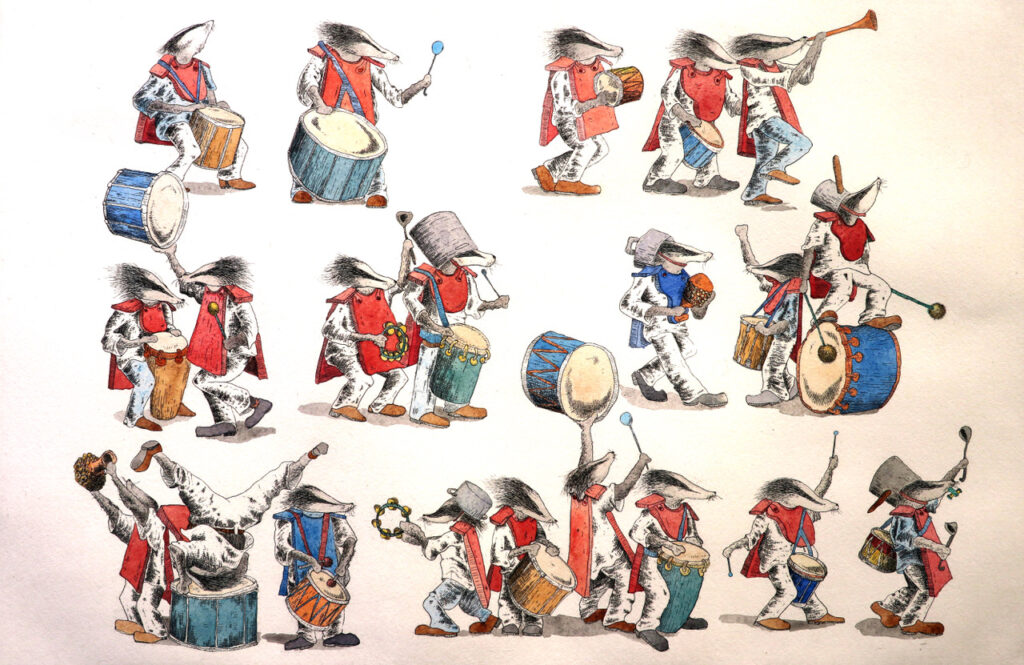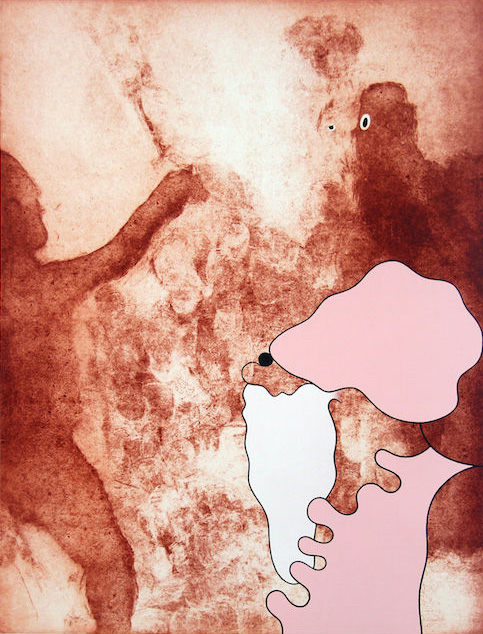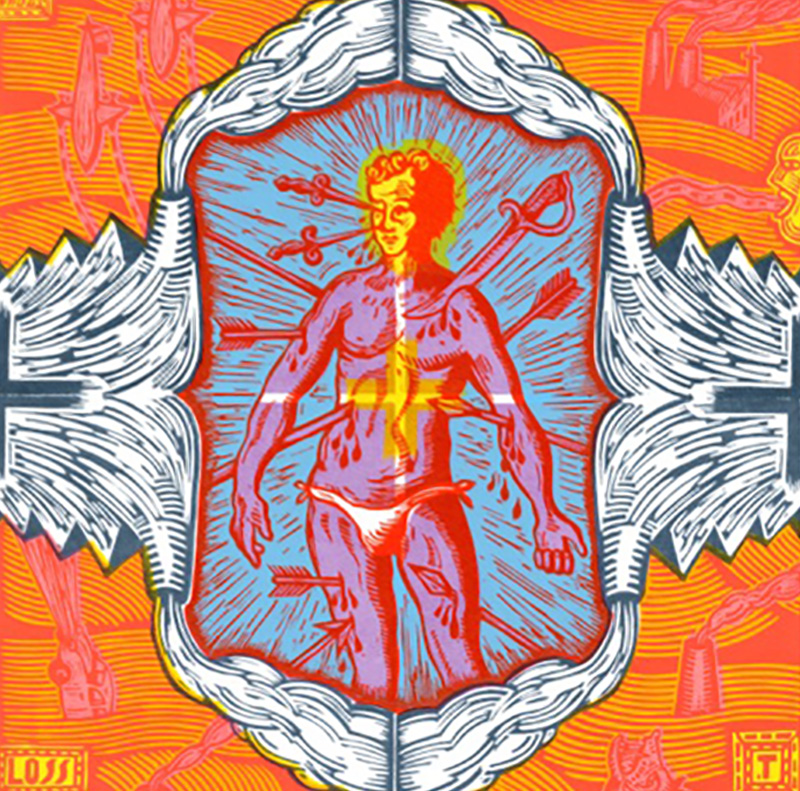Above:
Janine McCrum, 2023, Ngolak (Black Cockatoo) cries for country, digital print on 100% cotton rag paper.
Below:
Nikki Green, 2022, Place Where the Eye and Clouds are Drawn, digital print.
Monika Lukowska, The remains of deep time, 2023, digital print.
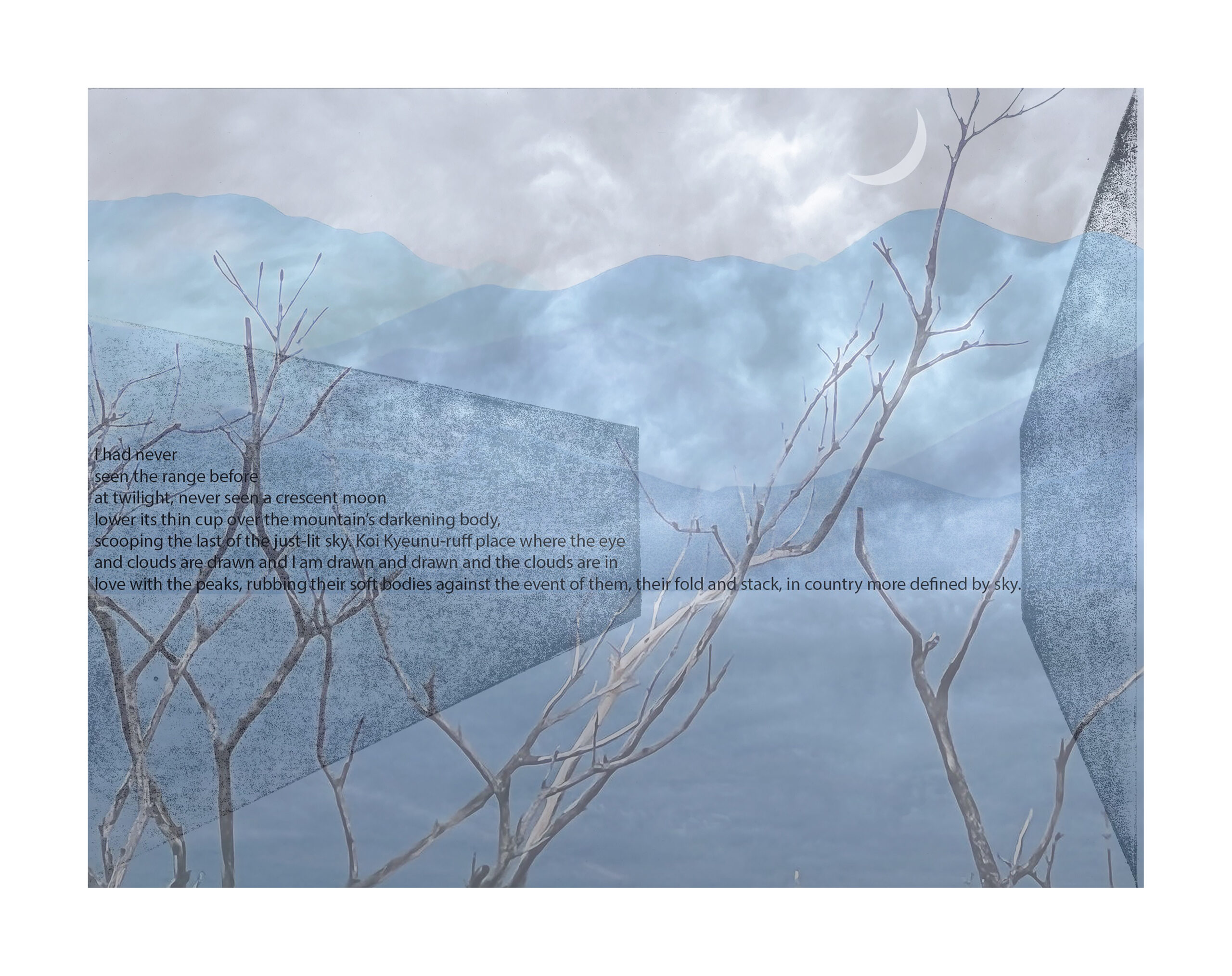
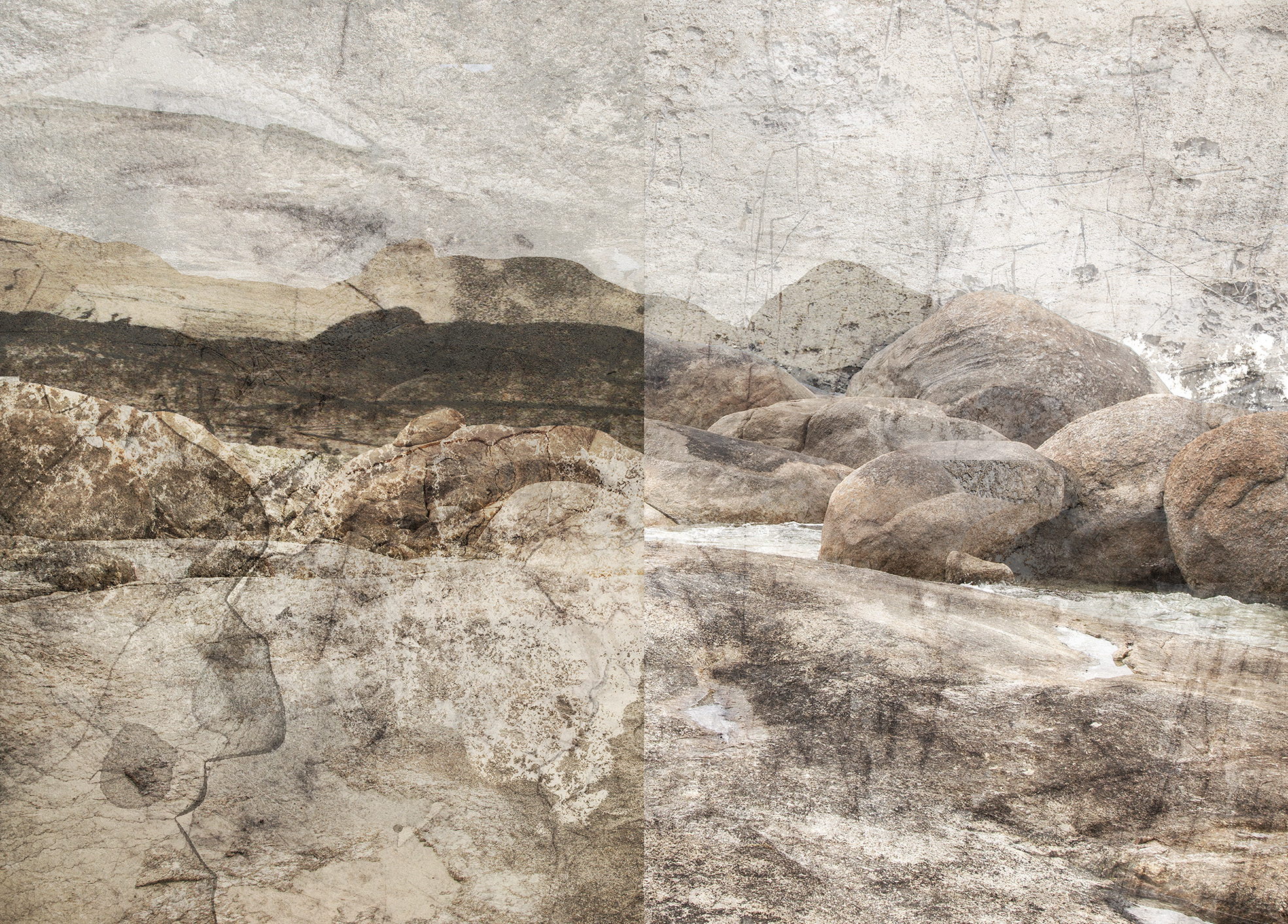
Located at the southern tip of the continent, the South West region of Western Australia is unique in the world for its abundant endemic species, surviving despite significant habitat loss stemming from agriculture and deforestation. With approximately 4000 plant species found nowhere else on earth, the South West is truly a place of significance and has been internationally recognised as one of only 34 biodiversity hotspots located around the world. Beyond this, the region has long held importance to First Nations groups, the Noongar, Ngadju, Wongi, Wadjuri, Wirlomin, Goreng, Menang, Pibulmun, and Kaprun people whose traditional lands occupy this place and whose practices and ways of knowing the land have generated a respectful and nuanced existence in that place for thousands of years.
More recently, three artists and a poet have converged here to examine and reflect upon the complex experience and histories of place in the exhibition Tracing Gondwana, on show at Albany Town Hall in September. This is the second iteration of the exhibition, which fittingly returns to the region after first showing at Midland Junction Arts Centre in partnership with Gondwana Link earlier this year.
The exhibition is a collaboration between printmakers Nikki Green, Monika Lukowska, Janine McCrum, and poet Reneé Pettitt-Schipp. Their interdisciplinary approach seeks to engage the audience in a deeper understanding of the beauty, vulnerability and ecological significance of the landscapes of the South West. Highlighting the threat to survival mounted by agricultural industries, and the climate emergency, and imploring that more value be attributed to ways of navigating and using the land practiced by traditional owners.
The experimental approach to printmaking taken by Nikki Green encompasses drawing, carving, stamping, and cutting away. She takes as inspiration personal experiences of the landscape and in particular comments on the human impact on the environment of the South West where she lives. Visually the artworks describe a cadence, or rhythm which is echoed in the incorporated text of Pettitt-Schipp’s poems in a collaboration between the printmaker and writer. The tempo of prisms evident throughout Green’s work allude to the built spaces of dwellings and boundaries superimposed on or framing the land, a reference to mankind’s long efforts to impose order upon nature.
Polish artist Monika Lukowska is drawn to the geological history and endurance of million-year-old rock formations and dramatic coastal landscapes formed by continental drifts. Her process involves collecting handmade and physical marks gleaned directly from the environment, transposing them to metal plates for printing. The capacity of the landscape to inform and contain narratives of a place is a key feature of Lukowska’s layered and complex digital prints and lithographs. The result for the audience is an insight into the textured and pervasive sense of time that Lukowska has spent immersed in that place.
Continuing the theme of layers of meaning, imagery, and experience inherent in the exhibition is the work of Janine McCrum. McCrum, like Green and Pettitt-Schipp, resides in the South West. As such she feels deeply her personal relationship to this landscape, its natural histories and problematic colonial past. In a more literal way than the other works in the exhibition, McCrum invites audience participation through the Contemplation Seat: Silence. The sculpture provides a physical pause within the exhibition to consider the irreversible implications of environmental degradation and change. Her digital prints, paired with her own poems, also take on a sculptural quality with apertures into the landscape referencing the passage of time, endangered and disappearing flora and fauna.
Throughout the exhibition, and visibly embedded in several of the artworks, is a series of poems by Reneé Pettitt-Schipp. Her words examine the tensions and contradictions present in her own existence as a seventh generation white-Australian. She posits her experience within the context of Australia’s colonial history and the climate emergency and invites consideration of problematic, conflicting experiences and narratives set amongst the outstanding natural beauty of the region.
The recurrent pairing of artworks with poetry reinforces the sense of cadence present in Tracing Gondwana, where it is clear the artists and writer have spent time walking and moving through these very landscapes. It is an inviting element that has the potential to draw viewers into a more intimate and relatable experience of the artwork.
The artists have gone to lengths to exhibit the project in metropolitan as well as regional contexts, a valuable exercise in reaching a diverse audience with these important concepts. Tracing Gondwana is a considerate and sensitive collection of creative works and is respectful of traditional owners’ deep connection to the landscapes, flora, and fauna the artworks reference. The exhibition is a generous sharing of experience and insight that results in a rich and nuanced encounter with the place.
—
Tracing Gondwana is at Albany Town Hall until 8 October.
—
Join the PCA and become a member. You’ll get the fine-art quarterly print magazine Imprint, free promotion of your exhibitions, discounts on art materials and a range of other exclusive benefits.

